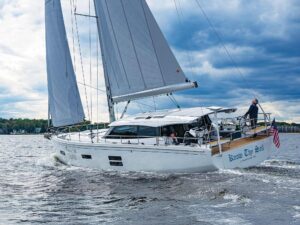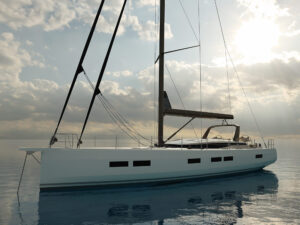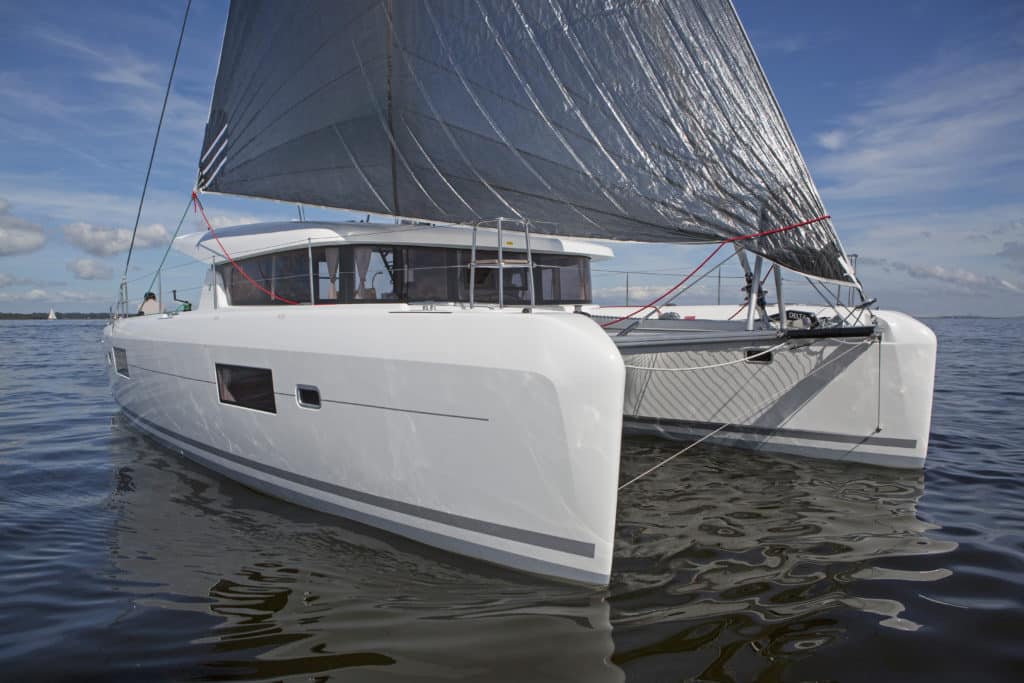
Comfort. Performance. Ease-of-use. Good ergonomic flow. Ask several creators of new cruising catamarans what the original design concept was, and you’ll likely hear some repetition of the same short list of familiar themes. Yet when you look at the boats themselves, the results could hardly be more different. With that puzzle in mind, we identified four standout cats from this year’s fleet of new models, including three Boat of the Year winners, and we closely interviewed their creators to find out how each project moved from the germ of an idea through prototype to model launch — and how they arrived at such different boats.
The Cats and Their Creators
The four cruising catamarans in our group come from three continents.
The U.S.-built Maine Cat 38 is conceived, designed, manufactured and sold by one man: Dick Vermeulen. Since 1993, working with a dozen craftsmen in midcoast Maine, Vermeulen has launched 130 boats, including 63 Maine Cat 30s and 24 MC 41s, as well as a 47-foot power cat and a 22-foot Dick Newick design. Today Maine Cat has the capacity to build five, maybe six, MC 38s per year.
“We’re really a craft shop here, one at a time. But there’s one thing about the boat that comes down the line here,” says Vermeulen, a mechanical engineer who grew up sailing competitively in New Jersey. “It has to be the fastest cruising cat out there, or I’ve failed at everything I’ve done.”
The French-built Lagoon 42 comes from the world’s most prolific catamaran builder. Part of Groupe Beneteau, whose Boat Division will turn over roughly $960 million annually, Lagoon’s roughly 1,200 employees are on track to launch 350 boats, in models ranging from 38 to 77 feet, this year. Since its first boat in 1987, Lagoon has built some 4,200 cruising cats. We spoke with Lagoon America director Fred Signat, a 20-year veteran of the company who came up through the design department before managing sales regions in Europe, the Indian Ocean, and North America.
“Roughly the life of one model is five years,” says Signat. “It’s very close to the car business now, and so every year we’re working on model changes. But if a boat is a success, we’re not in a rush to replace that model.” The Lagoon 42 won Best Full-Size Multihull Under 50 Feet in last year’s BOTY contest.
Franck Bauguil manages yacht sales for Travelopia, which until recently was known as TUI Marine. In case that name doesn’t ring a bell, it’s the parent company of The Moorings, Sunsail and Leopard Catamarans — a marine leisure business that employs 77,000 people and manages 1,800 charter boats at 80 bases around the world. Travelopia is also the sole client of South Africa-based Robertson and Caine, a company that employs 1,400 people building catamarans from 40 to 58 feet. Bauguil provides the design brief for all new models to the builder and to Alex Simonis, the naval architect.
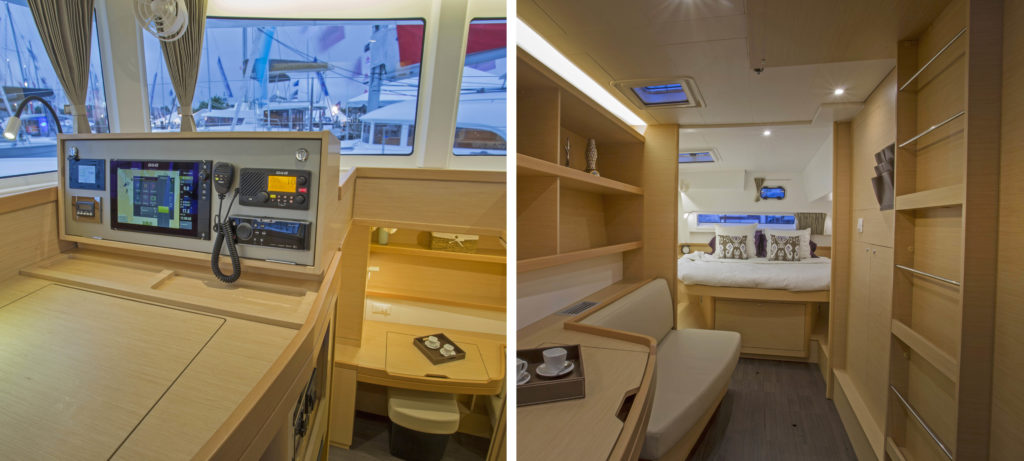
“What’s unique about us,” Bauguil says, “is that Robertson and Caine doesn’t have 50 or 100 dealers in front of it. It has one, and I’m the contact person.” Collating feedback from several departments within Travelopia (sales, charter operations, after-sales and others), Bauguil knows exactly how many boats of each model to build in a given year — 211 boats in 2017 — and how many of those will go into private ownership or charter. And because 60 percent of the boats will go into charter programs managed by Travelopia, Bauguil knows his company carries the responsibility to service the boats for at least the first five years. It’s an incentive to create boats that are easy to maintain, a benefit that extends to private owners as well. The Leopard 45 (Moorings 4500, Sunsail 454) won Best Charter Boat in the most recent BOTY contest.
Phil Berman, president of the Multihull Company, based in Philadelphia, has been pursuing the sweet spot in performance cruising catamarans for his entire career. After winning Hobie Cat World Championships in 1979 and 1980, and founding a yacht brokerage specializing in catamarans, he understands both what it takes to make a fast catamaran and what the market is looking for. In the early 2000s, Berman imported the sporty Dolphin line of catamarans from Brazil; in 2011, he founded Balance Catamarans. Among other projects, he conceived the Balance 526, designed by Anton du Toit and built by Nexus Yachts in South Africa. The boat was a home run in the eyes of the BOTY judges, winning the top prize in 2017, Import Boat of the Year.
“I felt the opportunity in the market arose because all of the big builders are really very skewed toward low performance and high volume,” Berman contends. “Each succeeding generation of cats is getting slower.” The 526 was born to counter that trend. “She’s a wind-speed boat in light airs,” he said, meaning the boat will sail as quick as the breeze in 10 knots or less. Berman and Nexus Yachts plan to deliver five or six new boats per year.
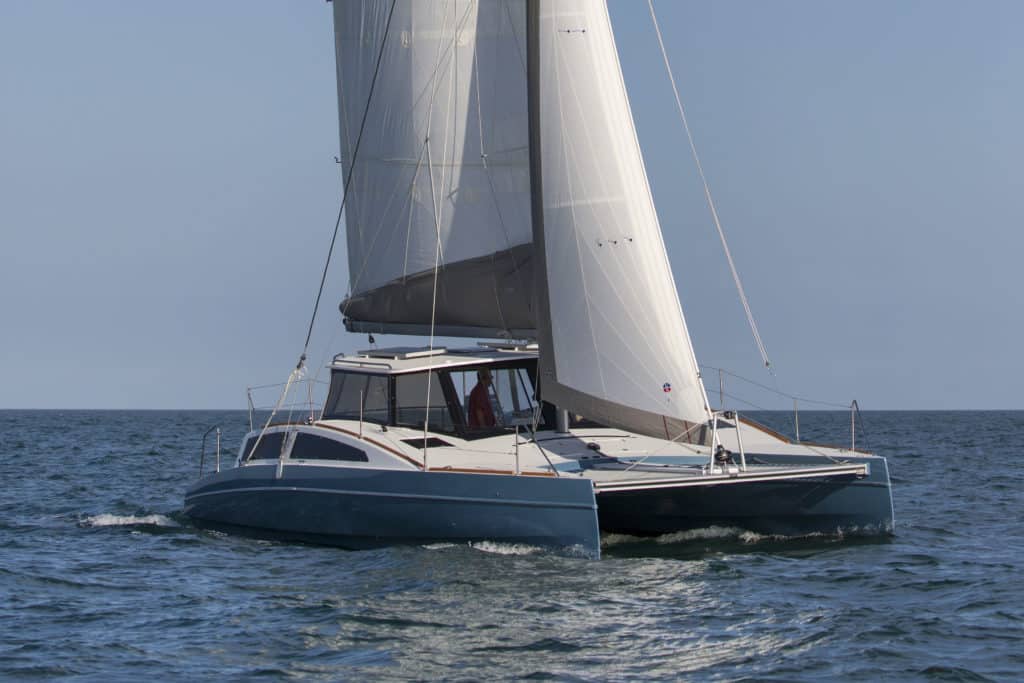
The Germ of an Idea
We asked each cat creator what inspires a new model. Here, in their own words, are their responses.
Dick Vermeulen (Maine Cat 38): Everybody has to take a look at the intended use, and that was my starting place for the 38. The Maine Cat 41 was the big “had-everything, liveaboard monster boat.” It had the ability to carry all that weight. It had the genset. It had the air conditioning. It had the watermaker. It had 365 pounds of toys on board, not counting the dinghy and the engine. The Maine Cat 30 is a real plain-jane, inexpensive, go-sailing type of boat, and I really enjoyed it. And obviously, our customers do too. When a used one comes on the market, it doesn’t last for a couple of days, and it’s sold again.
So that was the starting place for the 38. Who’s going to sail this boat? And how? If they’re into all the junk, then they don’t want my boat. Again, it has to be the quickest cruising cat going, so to get to that point, you’ve got to get rid of junk. The owners who are going to buy this boat, yeah, they’re interested in the comfort. And the stability. And the ambiance. And the spaces. And the visibility. And all this great stuff. But what do they really want to do? They want to pass the guy next to them. And that’s what I want to do. My end goal is to have the most efficient piece of machinery on the water.
And then you’ve got to figure out who’s going to be on the boat, and how they’re going to handle the boat. I’ve got a lot of guys who want to be able to go out there on a Sunday afternoon by themselves. And if they have a 40-some-odd-foot beast, they’re not going out. But to have a Maine Cat 30, they’ll go out. And I’ve made the 38 as simple to sail, if not simpler, as the 30. I’ve got to have a boat that I can handle myself.
Fred Signat (Lagoon 42): Several years ago, we wanted something new. Frankly, the Lagoon image — our competitors were talking about Lagoons as caravans, so we wanted to renew this image. We asked the journalists to apply the technical solutions they used on the racing boats to the Lagoons. They came up with plenty of ideas that we accepted and many that we didn’t. And the main idea was the new rig (moved aft, beginning with the 2015 Lagoon 39 and 52). On the Lagoon 380, the rig was 37 percent aft; on the 42 it’s 53 percent aft. That really reduced the pitching, one of the key points addressed by the journalists. The philosophy was to have an easy boat to handle, so we have the self-tacking jib. The Lagoon philosophy: easy to use. Comfort. Safety. And performance, even if it’s not a racing boat.
At Lagoon, we have two scenarios. On the new Lagoon 42, we had the Lagoon 420 and 421 before. We built 170 of those, and we wanted to renew the model. For a replacement like that, we get feedback from customers and our dealers and after-sales services. We look at our competition and what’s new on the market. We look at trends, such as fabric. Let’s say 20 percent of these boats go into charter, so we get feedback from charter companies. With a project like the Lagoon Seventy 7 (U.S. launch was at the Miami boat show in February 2017), we had no model to replace, so the process was very different. The first time we talked with dealers about the Seventy 7 was roughly three and a half years earlier. We had feedback from the Lagoon 620 owners and from people looking at custom boats at CNB (Lagoon’s sister company at Groupe Beneteau), so we mixed those feedbacks, and that’s why it took us so long to develop the project. It’s a big boat!

Franck Bauguil (Leopard 45): Right now, we have Project 2020, which lines up a development plan for the next three years. The next two models that we’ll develop are pretty much set in stone. But when you start looking at Model Three down the development pipeline, that can change. The time from the first product brief to a boat in the water for a test sail is 18 months. We plan not only the production per year but also the overall number. For the 45-footer, we’re going to have 46 units per year. Over the life cycle of the product, which is five to six years, we’re looking at 200 units. That’s going to affect the price, because obviously, you have an initial investment and then you spread out your capital over the number of boats. So the more you do, technically the lower the price. In the brief, we already have a target price for the boat equipped: charter-ready, or owner-ready. We define performance in our design brief. I don’t know if the other guys do that, but we do. We define dimension. We define accommodations. But only in the broad sense: four cabins, four heads, en suite. We want the design team to start working on the boat, giving them direction, but not to be too restrictive either.
And we can define some innovations in the brief. When we did the brief of the 44-footer (the 2011 Import Boat of the Year), we had a forward cockpit. That was the first forward cockpit we did, including access to the forward cockpit from inside. That was in the brief. And that’s ambitious. We’re the most open boat you can find. So the brief for last year’s 45 had the same ratio of open access to the cockpit from that bulkhead. In that case, we said to Alex Simonis, the naval architect, “You’ve got to do it. See you in two weeks.” He may come back and say it’s impossible. But it hasn’t happened yet. His job is to make it happen. By that point, we may have done some other feasibility studies where we want to do something but we know it’s too ambitious so it’s not going to happen.
Phil Berman (Balance 526): Since the formation of my company, the Multihull Company, about 15 years ago, I’ve sold about 500 used catamarans. So all I do is go to surveys and sail all of these boats. I see them repaired, and I see them broken. And the best part for me is that when the boats are sold, I get to know exactly what the people thought about their boat. Until they’re sold, everybody’s lying about them online because they want to hold their resale value. I’ve seen all the mistakes.
During a sea trial of a 56-foot catamaran off Palm Beach, Florida, several years ago, in 17 knots of wind, I couldn’t get the boat to go more than 7 knots. I thought, We’ve really lost the balance in the catamaran scene. Too many of the boats are designed for charter, and the people who are looking for higher performance, a more pleasurable sailing boat, are kind of left in the lurch. On one hand, some of the boats are too extreme; all they’re about is performance or racing. And on the other, they’re too “charter” — too big inside, too slow. So what we sought to do here with this company was seek a balance between comfort on the one hand and performance on the other. And to produce yachts that are simple to maintain, easy to operate and that bring real sailing pleasure to people.
So what I wanted to design was the most objection-free performance cat possible. We designed the Balance 526 to really kind of cruise along easily between 9 and 12 knots.
Read Part 2 here
Tim Murphy is a Cruising World editor-at-large and a longtime Boat of the Year judge.



